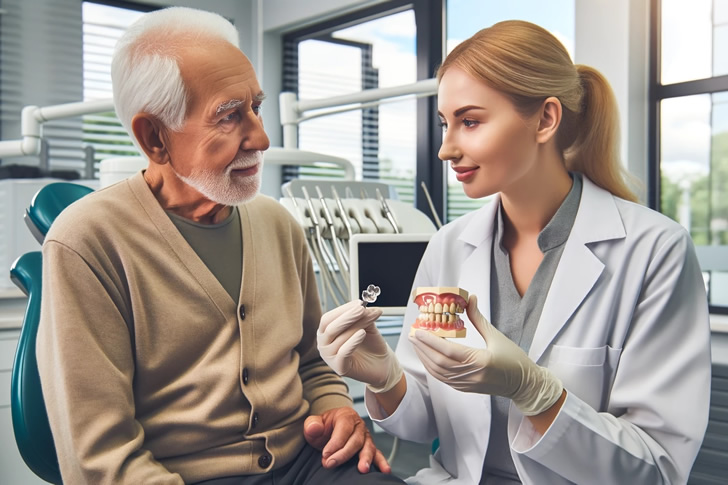Transforming Dental Care for Seniors: Budget-friendly Options for Dental Implants
As the global population ages, the demand for specialized healthcare options, including dental care, increases. Among senior citizens, dental health is a critical component of overall well-being, affecting not just physical health but also confidence and quality of life. Dental implants stand out as a valuable solution for many elderly individuals facing tooth loss, yet their cost can be prohibitive. This article delves into the realm of affordable dental implants for seniors, exploring how advances in technology and changes in healthcare policy are making these necessary treatments more accessible.

The Growing Need for Dental Implants Among Seniors
Tooth loss is a common issue among older adults, with statistics showing that approximately 27% of seniors over the age of 65 are without remaining teeth. Traditional solutions like dentures are not always comfortable or functional, leading many to consider dental implants as a preferable alternative. Dental implants provide a durable, stable base for replacement teeth, which behave much like natural teeth. The benefits for seniors include improved oral health, easier eating, better facial aesthetics, and enhanced speech, which together contribute to greater lifestyle satisfaction and health outcomes.
Understanding the Cost of Dental Implants
The cost of dental implants can vary significantly depending on geographic location, materials used, and the specific needs of the patient. On average, a single dental implant in the United States can cost anywhere from $3,000 to $4,500. This expense can be a major barrier for seniors living on fixed or limited incomes. Therefore, finding ways to reduce these costs while maintaining high quality is essential for increasing access to this important treatment.
Technological Innovations Reducing Costs
In recent years, technological innovations have played a key role in decreasing the overall costs of dental implants. Developments in 3D printing, for example, are revolutionizing dental prosthetics by allowing for rapid production of customized implants at a lower cost than traditional methods. Additionally, new materials such as zirconia are providing alternatives to the more expensive titanium, which has been the standard for implant posts. These advancements not only reduce costs but also improve the performance and aesthetic outcomes of dental implants.
Insurance and Financing Options
Another factor that significantly affects the accessibility of dental implants is the coverage options available through insurance. Traditional Medicare does not typically cover dental implants, which leaves many seniors without support for these procedures. However, some private insurance plans and Medicare Advantage plans do offer partial coverage for implants under specific conditions. Understanding these options and shopping around for the right plan can lead to substantial savings. Apart from insurance, many dental clinics now offer financing plans that spread the cost of treatment over several months or years, making dental implants a more manageable investment for seniors.
Government and Non-profit Programs Making a Difference
In addition to personal finance strategies, government-led initiatives and non-profit organizations are increasingly recognizing the importance of dental health for seniors. Programs such as those offered by the Dental Lifeline Network provide significant discounts or even free dental care, including implants, for the elderly who qualify. Many states also have their own programs aimed at assisting seniors with dental expenses. Staying informed about such opportunities can be incredibly beneficial for those seeking affordable dental implants.
Community Health Centers
Community health centers funded by the federal government often offer dental services at reduced rates. These centers determine costs based on a sliding scale aligned to the patient’s income and ability to pay. Seniors may receive not just basic dental care but also more complex procedures like implants at a fraction of the regular cost, dependent on their financial situation.
Conclusion: A Look Forward for Senior Dental Care
Dental implants represent a significant improvement in quality of life for seniors dealing with tooth loss. While the initial cost can be high, the availability of new technologies, strategic insurance planning, financing options, and support from governmental and non-profit organizations are helping to make dental implants a viable and affordable option for the elderly. As society continues to recognize the critical link between dental health and overall health, it is likely that even more resources will be directed towards helping seniors access the dental care they need. Every senior deserves to smile with confidence, and through collaborative efforts, that is becoming an increasingly achievable goal.
In conclusion, transforming dental care for seniors not only involves advancing medical technology but also enhancing the accessibility of these technologies. By continuing to develop affordable options and support systems, we can ensure that seniors receive the impactful dental treatments necessary for maintaining their health and happiness.







Recent Comments